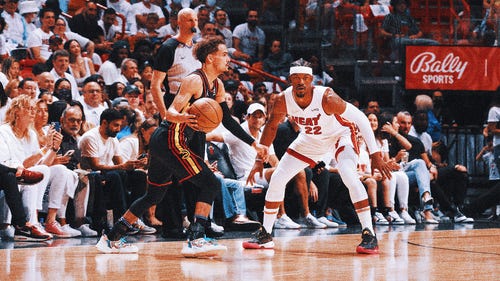
Forget Angola: Now it gets tougher
TEAM USA 121, ANGOLA 66
Despite their hugely lopsided win, several significant developments occurred during Team USA’s opening gambit in the knockout round. At the same time, the enormous disparity in talent between the two teams, along with Angola’s NBA-style strategies, served to maximize the Americans' strengths while minimizing their weaknesses.
THE POSITIVES
USA’s ball movement was dramatically improved. Time and again, they made the all-important extra pass that they seldom executed during group play. As a result, their half-court offense depended far less on one-on-one play than in previous games. A telling indication of their unselfish passwork was the 28 assists the Americans tallied — easily their highest total thus far. Not to mention their being guilty of only four turnovers.
Their rain of 3-balls completely overwhelmed Angola’s zone defenses.
Pressure on Angola’s guards induced 13 turnovers that led a dunk-a-thon at the other end.
Aggressive ball-denial was likewise instrumental in totally disrupting Angola’s offense.
While everybody on the squad broke into the scoring column, credit Chauncey Billups — a game-high 19 points, including 5-7 from beyond the bonus arc — for getting his team’s offense clicking from the get-go.
Team USA also dominated their offensive glass, grabbing 19 of their own missed shots — which nearly equaled Angola’s not-so-grand total of 23 rebounds at both ends.
Overall, and except for a defensive let-down late in the second quarter, this was a blitz from tip to buzzer.
THE MITIGATING FACTORS
The NBA players had no trouble adjusting to Angola’s up-tempo pace. That’s because the Africans were small, depended mostly on isolations, got virtually no low-post scoring, routinely launched quick shots and had poor defensive rotations and even worse interior defense.
In other words, the Angolans mimicked the speedball offense of the Americans. The difference, of course, was that Angola could only muster about half the talent of the Americans — a proportion that was demonstrated by the winners' virtual doubling of the points scored by the losers.
In addition, Angola’s passive, sagging man-to-man defense allowed (even encouraged) the Americans to hoist as many treys as they wished — 18-38 for 47.4%.
GROUNDS FOR FURTHER IMPROVEMENT
Among Angola’s eight offensive rebounds were six putbacks. Too many.
The Americans defensive balance in half-court situations continued to be generally unsatisfactory. Because Team USA habitually overreacted to ball penetration, Angola wound up with numerous open shots from near and far. If this same pattern continues, it’s a good bet that future opponents will shoot better than the 41.4% from the field and 25.9% from 3-point land that Angola managed.
For sure, it’s difficult to maintain a high level of concentration in such a blowout. But learning to sustain focus is as vital a skill as making 3-balls.
As the field narrows and the opposition gets stiffer, Team USA should forget the easy time they had against Angola ASAP. It will be the last free-wheeling layup drill and uncontested target practice they will experience for the duration of the tournament.
WHAT’S AHEAD
Russia’s tricky matchup zones and Princeton-style offense — both of which will require the Americans to play with patience, alertness, discipline, and unblemished concentration — will present a problem.
Even so, in a confrontation between opposites, Team USA’s speedball approach should ultimately be able to handle Russia’s slowball game plan.
In the medal round, however, the competition will get more exotic and more demanding.
If you have a question, comment or column idea for Charley Rosen, please email rosenroundball@gmail.com and he may respond in a future column.








